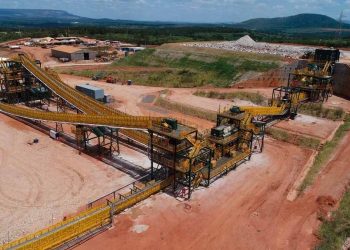A global manufacturer of sensors for measuring level, point level and pressure, as well as devices and software for integrating into process control systems, Vega is well-known across the globe for its commitment to high quality products and German-engineering.
Vega managing director John Leadbetter spoke to Mining Technology about the industry’s greatest breakthroughs and the importance of listening to clients.
What are the main solutions and services that VEGA provides for the Australian mining market?
The three main categories that we deal in are level instruments, pressure instruments and radiation instruments. In amongst these categories are various sub groups which break down Vega’s services to the specifics that each application requires. From there, we provide a lot of choice with regards to fittings and features.
What is your USP? What makes you different from the competition?
German quality. Everything that we import to Australia is made in our factory in the Black Forest. This means are customers benefit from high quality as well as Vega’s years of R&D experience. Before we release a new product to the market, we conduct at least two years of in-field testing to ensure it can handle the applications, that it’s going to perform, and that it’s going to give customers exactly what they are paying for.
Another USP is our staff. The people that I employ in sales are all technicians and they must come from a technical background. Our sales team have to understand customer needs, but they also have to understand the instruments we’re offering. We run several staff training programmes, but there must be that basic knowledge to start with.
What are the main problems your customers (and potential customers) are seeing at the moment and how does VEGA solve them?
Vega doesn’t sell instruments, we sell solutions to problems. We sit down with customers, go through their issues, and come up with a solution that is going to get them back on track. Perhaps the customer has a piece of equipment that gets very dusty and loses signal and doesn’t give the right readings. From this we know that the problem is dust, so we can offer a piece of equipment that is immune to dust.
There’s no one piece of equipment that does everything, we have a number of choices. It’s about listening to a customer’s issue and offering the correct solution from there. This is why I employ technical personnel who will also conduct a technical evaluation before we even offer a quote.
A key piece of feedback we get from the market is that our sales staff actually listen. One of the things I say to my team is that you have one mouth and two ears; listen twice as long as you talk. The customer wants to tell you what the problem is, and you’ve just got to listen.
Why are effective process instrumentation systems so important for Australian mines and mining-related operations?
Mines are huge operations; thousands of square km of land. What operators want is for their mine to run as smoothly and efficiently as possible and to maximise their output to sell to their customers. They have customer demands and deadlines to meet and any downtime is time not making money. We’re helping them to streamline their operations to meet those demands.
What’s been the most important technological breakthrough in process instrumentation in recent years?
The biggest breakthrough has been asset management. Asset management constantly monitors equipment to forecast whether it is deteriorating in performance. Customers need that information so they can pre-plan maintenance and avoid breakdowns.
We’re moving now to the industrial internet of things, which is all about information. The last few years have been a build up to IOT4 where information can help to keep a plant running, monitor performance and forecast when maintenance can be performed.
If you could give our readers one piece of advice about how to improve the effectiveness of their process instrumentation, what would it be?
Invest in technology. The mining industry is very demanding on any piece of equipment. If you invest in quality, it’s going to give you reliability. We also encourage customers to look not just at the upfront price of equipment, but at the total cost of ownership.
For example, you might buy a car for £20,000. But after four years, for example, you’ll also have the cost of petrol, registration, tyres, maintenance, etc., so the actual cost of ownership is the purchase price plus running expenses.
Yes, German quality does cost a little more, that’s a well-known fact. But if you’ve had no breakdown or maintenance issues, you haven’t had to invest more into that instrument or operation.













